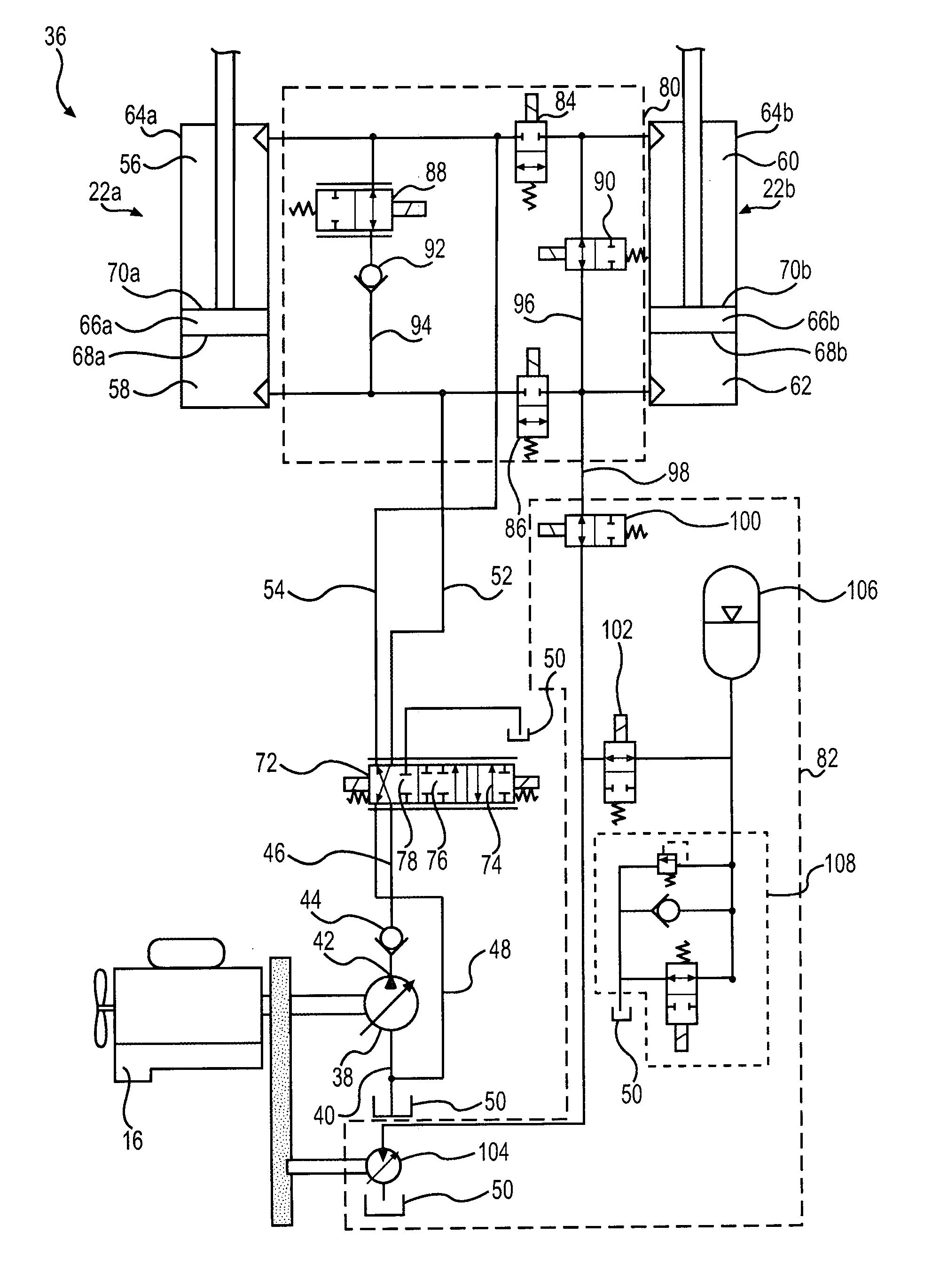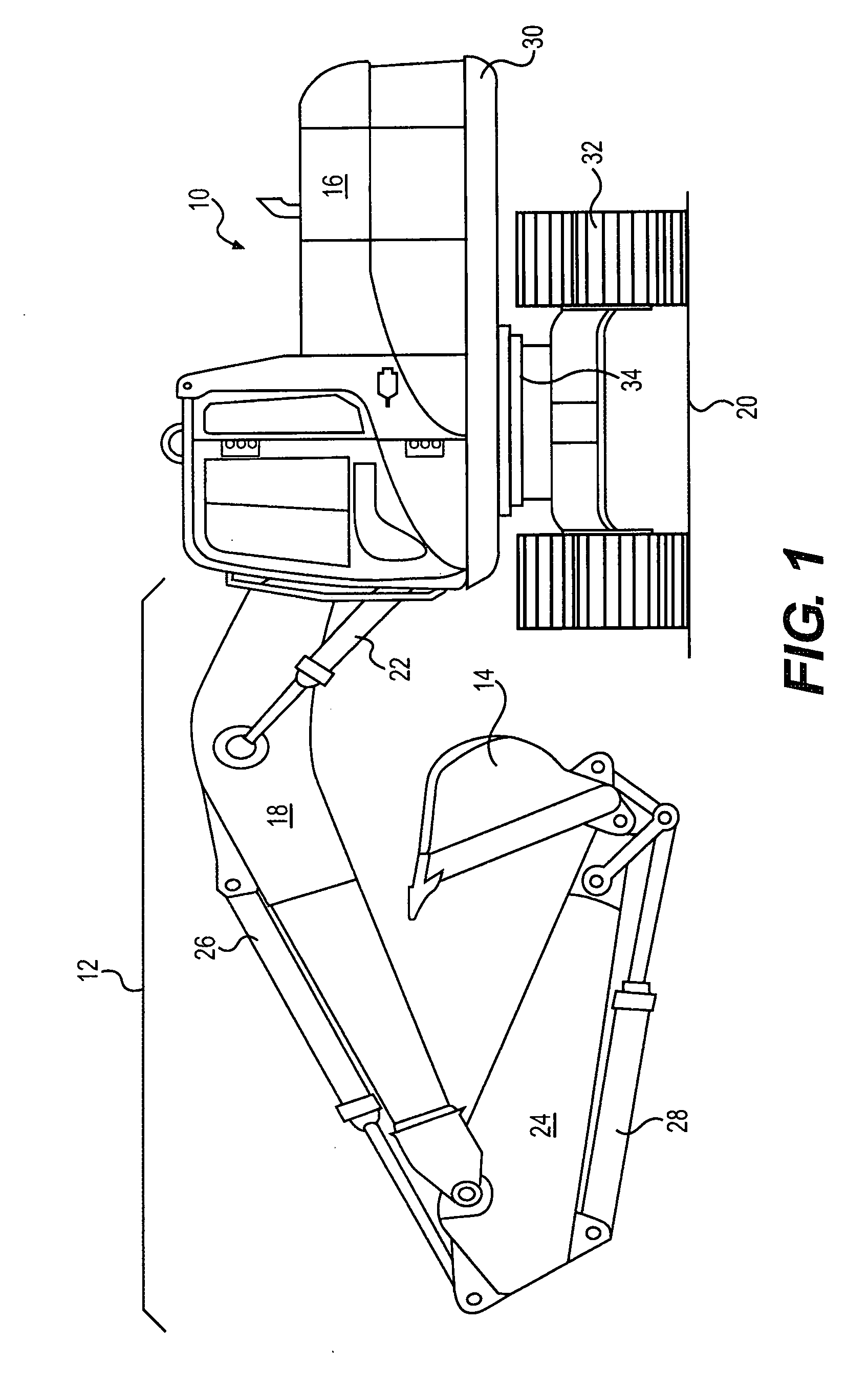Energy recovery system
a technology of energy recovery and energy storage, applied in the direction of fluid couplings, servomotors, couplings, etc., can solve the problems of waste of energy, loss or waste of energy, and undesired heating of hydraulic fluid,
- Summary
- Abstract
- Description
- Claims
- Application Information
AI Technical Summary
Problems solved by technology
Method used
Image
Examples
Embodiment Construction
[0013]FIG. 1 illustrates an exemplary machine 10 having multiple systems and components that cooperate to accomplish a task. Machine 10 may embody a fixed or mobile machine that performs some type of operation associated with an industry such as mining, construction, farming, transportation, or any other industry known in the art. For example, machine 10 may be an earth moving machine such as the excavator depicted in FIG. 1. Alternatively, machine 10 may be a dozer, a loader, a backhoe, a motor grader, a haul truck, or any other earth-moving or task-performing machine. Machine 10 may include an implement system 12 configured to move a work tool 14, and a power source 16 that drives implement system 12.
[0014]Implement system 12 may include a linkage structure moved by fluid actuators to position and operate work tool 14. Specifically, implement system 12 may include a boom member 18 that is vertically pivotal about an axis relative to a work surface 20 by a pair of adjacent, double-...
PUM
 Login to View More
Login to View More Abstract
Description
Claims
Application Information
 Login to View More
Login to View More - R&D
- Intellectual Property
- Life Sciences
- Materials
- Tech Scout
- Unparalleled Data Quality
- Higher Quality Content
- 60% Fewer Hallucinations
Browse by: Latest US Patents, China's latest patents, Technical Efficacy Thesaurus, Application Domain, Technology Topic, Popular Technical Reports.
© 2025 PatSnap. All rights reserved.Legal|Privacy policy|Modern Slavery Act Transparency Statement|Sitemap|About US| Contact US: help@patsnap.com



